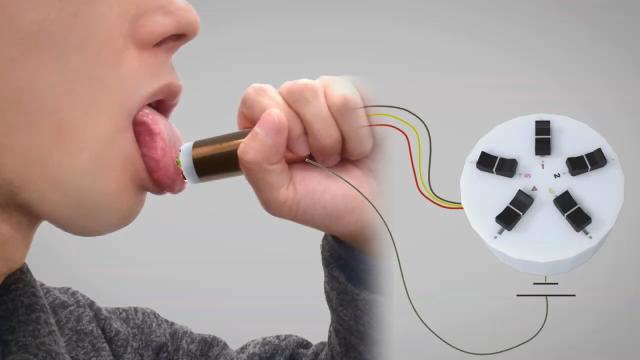No matter how they may make you feel, licking your gadgets and electronics is never recommended. Unless you’re a researcher from Meiji University in Japan who’s invented what’s being described as a taste display that can artificially recreate any flavour by triggering the five different tastes on a user’s tongue.
Years ago it was thought that the tongue had different regions for tasting sweet, sour, salty, and bitter flavours, where higher concentrations of taste buds tuned to specific flavours were found. We now know that the distribution is more evenly spread out across the tongue, and that a fifth flavour, umami, plays a big part in our enjoyment of food. Our better understanding of how the tongue works is crucial to a new prototype device that its creator, Homei Miyashita, calls the Norimaki Synthesiser.
It was inspired by how easily our eyes can be tricked into seeing something that technically doesn’t exist. The screen you’re looking at uses microscopic pixels made up of red, green, and blue elements that combine in varying intensities to create full-colour images. Miyashita wondered if a similar approach could be used to trick the tongue, which is why their Norimaki Synthesiser is also referred to as a taste display.
There have been many attempts to artificially simulate tastes on the tongue with and without the presence of food, but they tend to focus on a specific taste, or enhancing a single flavour, such as boosting how salty something tastes without actually having to add more salt. The Norimaki Synthesiser takes a more aggressive approach through the use of five gels that trigger the five different tastes when they make contact with the human tongue.
The colour-coded gels, made from agar formed in the shape of long tubes, use glycine to create the taste of sweet, citric acid for acidic, sodium chloride for salty, magnesium chloride for bitter, and glutamic sodium for savoury umami. When the device is pressed against the tongue, the user experiences all five tastes at the same time, but specific flavours are created by mixing those tastes in specific amounts and intensities, like the RGB pixels on a screen. To accomplish this, the prototype is wrapped in copper foil so that when it’s held in hand and touched to the surface of the tongue, it forms an electrical circuit through the human body, facilitating a technique known as electrophoresis.
Electrophoresis is a process that moves molecules in a gel when an electrical current is applied, allowing them to be sorted by size based on the size of pores in the gel. But here the process simply causes the ingredients in the agar tubes to move away from the end touching the tongue, which reduces the tongue’s ability to taste them. It’s a subtractive process that selectively removes tastes to create a specific flavour profile. In testing, the Norimaki Synthesiser has allowed users to experience the flavour of everything from gummy candy to sushi without having to place a single item of food in their mouths.
In its current form the prototype is a bit bulky, but it could be easily miniaturized to a device as compact as the vapes everyone is already carrying around and regularly using. But instead of simulating the experience and flavours of smoking, it could recreate the satisfying feeling of eating a piece of chocolate, or drinking a milkshake, without having to ingest a single calorie.
